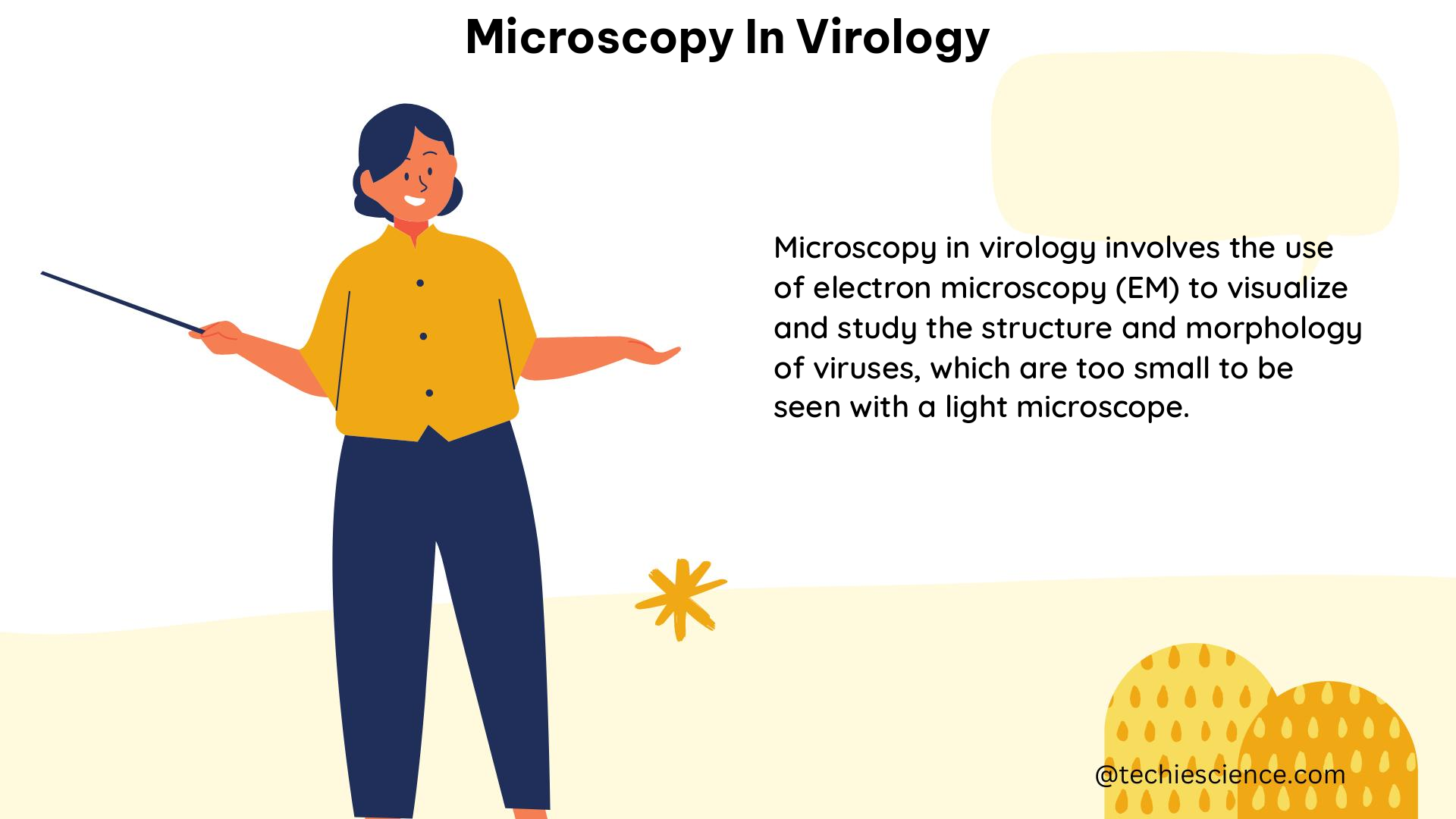Microscopy in virology is a powerful tool that allows researchers to visualize and study viruses and their interactions with host cells at the nanoscale level. This comprehensive guide will delve into the various microscopy techniques used in virology, providing physics students with a detailed understanding of the principles, applications, and quantifiable data associated with each method.
Light Microscopy in Virology
Light microscopy is a fundamental technique in virology, enabling the observation of viral particles and their interactions with host cells. One of the key parameters in light microscopy is the resolution, which is determined by the wavelength of the light used and the numerical aperture of the objective lens. The resolution of a light microscope is typically limited to around 200-300 nanometers (nm), due to the diffraction limit of light.
To overcome this limitation, super-resolution microscopy techniques have been developed, such as Stimulated Emission Depletion (STED) Microscopy and Structured Illumination Microscopy (SIM). These methods can achieve resolutions of 20-50 nm, allowing for the visualization of individual viral particles and their subcellular localization within host cells.
Fluorescence Microscopy
Fluorescence microscopy is a widely used light microscopy technique in virology, as it allows for the specific labeling and visualization of viral proteins, nucleic acids, and host cell components. This technique relies on the use of fluorescent dyes or fluorescent protein tags, which emit light when excited by a specific wavelength of light.
One example of the application of fluorescence microscopy in virology is the study of the cellular localization of viruses. A study using fluorescence microscopy found that the human immunodeficiency virus (HIV) preferentially targets activated CD4+ T cells and is found in close proximity to the microtubule-organizing center (MTOC) in these cells.
Live-Cell Imaging
Live-cell imaging, using techniques such as time-lapse microscopy, enables the real-time observation of viral replication and host-virus interactions. This approach can provide valuable insights into the dynamics of viral replication, as demonstrated by a study that used time-lapse microscopy to observe the formation of viral factories during vaccinia virus replication.
Electron Microscopy in Virology

Electron microscopy (EM) is a powerful tool in virology, as it can provide high-resolution images of viral particles and their ultrastructural features. The two main types of electron microscopy used in virology are Transmission Electron Microscopy (TEM) and Scanning Electron Microscopy (SEM).
Transmission Electron Microscopy (TEM)
TEM allows for the visualization of the internal structure of viral particles, including the viral capsid, genome, and envelope. This technique can be used to determine the size and morphology of viruses, as well as to study the cellular localization of viral particles within host cells.
For example, a study using TEM found that the herpes simplex virus has an icosahedral capsid composed of 162 capsomeres, which is a symmetrical structure that protects the viral genome.
Scanning Electron Microscopy (SEM)
SEM, on the other hand, provides high-resolution images of the surface topography of viral particles and infected cells. This technique can be used to study the attachment and entry of viruses into host cells, as well as the budding and release of newly formed viral particles.
Quantifying Viral Particles
Electron microscopy can also be used to quantify the number of viral particles in a sample. For instance, a study using EM found that the concentration of influenza A virus particles in nasal swabs from infected individuals ranged from 10^4^ to 10^7^ particles/ml.
Automated Image Analysis in Virology
The advent of deep learning algorithms has revolutionized the field of automated image analysis in virology. These algorithms can be trained to classify infected and uninfected cells, as well as to quantify viral infection in microscopy images.
For example, a study using deep learning found that the algorithm could accurately classify infected and uninfected cells with an area under the receiver operating characteristic (AUROC) of 0.94, demonstrating the potential of this approach for high-throughput analysis of viral infection.
Conclusion
Microscopy in virology is a rapidly evolving field that provides researchers with powerful tools to visualize and study viruses and their interactions with host cells. From light microscopy techniques, such as fluorescence microscopy and live-cell imaging, to electron microscopy methods, and automated image analysis using deep learning, this comprehensive guide has covered the key principles, applications, and quantifiable data associated with each approach.
By understanding the capabilities and limitations of these microscopy techniques, physics students can gain valuable insights into the world of virology and contribute to the ongoing efforts to combat viral diseases.
References:
- Concepts in Light Microscopy of Viruses – PMC – NCBI
- Methods to Study Viruses – PMC – NCBI
- Spatial organization of HIV-1 infection in lymphoid tissue in vivo – Science
- Dynamics of vaccinia virus replication in living cells – Nature Cell Biology
- Ultrastructure of herpes simplex virus type 1-infected human cells – Journal of Virology
- Super-resolution microscopy – Nature Reviews Methods
- A versatile automated pipeline for quantifying virus infectivity by light microscopy and artificial intelligence – Nature Communications

The lambdageeks.com Core SME Team is a group of experienced subject matter experts from diverse scientific and technical fields including Physics, Chemistry, Technology,Electronics & Electrical Engineering, Automotive, Mechanical Engineering. Our team collaborates to create high-quality, well-researched articles on a wide range of science and technology topics for the lambdageeks.com website.
All Our Senior SME are having more than 7 Years of experience in the respective fields . They are either Working Industry Professionals or assocaited With different Universities. Refer Our Authors Page to get to know About our Core SMEs.